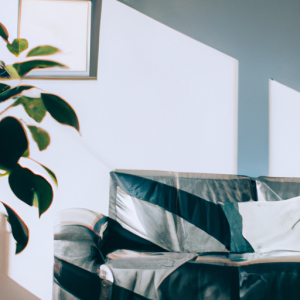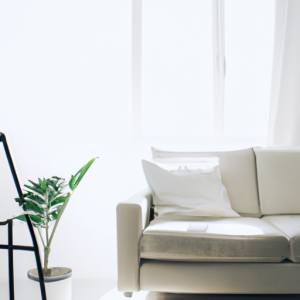In the fast-paced and cluttered world we live in, finding moments of peace and tranquility within our own homes has become a necessity. Enter minimalist interior design, a concept that celebrates simplicity, functionality, and clean aesthetics. In this article, we will delve into the principles, elements, benefits, and practical tips for achieving a minimalist interior design that will transform your living space into a serene haven.
Principles of Minimalist Interior Design
Minimalist interior design follows a set of fundamental principles that create an atmosphere of calmness and order:
- Simplicity and minimalism: At the core of minimalist design is the idea of eliminating unnecessary clutter and objects. This approach allows you to focus on the essential elements and functionality of a space, stripping it down to its bare essentials.
- Clean lines and geometric shapes: Minimalist design embraces straight lines and simple shapes in furniture and architectural features. Ornate and intricate designs are eschewed in favor of sleek and understated aesthetics.
- Neutral color palette: A minimalist color scheme typically revolves around white, beige, gray, and earth tones. By employing a limited color palette, a sense of harmony and tranquility is achieved throughout the space.
- Functional and uncluttered spaces: Minimalism emphasizes functionality and efficient use of space. Clever storage solutions help to minimize visual distractions, while open spaces and a sense of flow create an uncluttered and harmonious environment.
Elements of Minimalist Interior Design
To achieve a minimalist interior, attention must be given to the following key elements:
- Furniture selection: Quality over quantity is a mantra in minimalist design. Opt for sleek and functional furniture pieces that serve a purpose without overwhelming the space.
- Lighting: Incorporating natural light is paramount in minimalist design. Large windows and strategically placed mirrors can help maximize the use of natural light. Minimalist light fixtures with clean lines and unobtrusive designs enhance the overall aesthetic.
- Materials and textures: Minimalist design favors the use of natural and sustainable materials, such as wood, stone, and metals. Patterns and textures are used sparingly to maintain a clean and uncluttered look.
- Art and decorations: Select a few meaningful and impactful pieces of art or decor that resonate with you. Integrate them into the overall design without overpowering the space, ensuring they harmonize with the minimalist aesthetic.
Benefits of Minimalist Interior Design
Adopting a minimalist interior design approach offers several advantages:
- Reduced stress and improved well-being: A clutter-free and visually harmonious environment can have a positive impact on mental and emotional well-being, promoting relaxation and reducing stress levels.
- Enhanced focus and productivity: Minimalist spaces provide fewer distractions, allowing for increased focus and productivity. Clear surfaces and organized surroundings can improve concentration and creativity.
- Easy maintenance and cleaning: With fewer objects and clutter to manage, cleaning and maintenance become more straightforward and less time-consuming. Minimalist spaces lend themselves to effortless upkeep.
- Sustainable and eco-friendly design approach: By prioritizing quality and choosing durable and eco-friendly materials, minimalist design promotes sustainability and conscious consumption.
Tips for Achieving a Minimalist Interior Design
To embark on your minimalist design journey, consider the following practical tips:
- Decluttering and organizing: Begin by eliminating unnecessary items and organizing your belongings. Embrace the concept of “less is more” and let go of objects that no longer serve a purpose.
- Prioritizing quality over quantity: Invest in high-quality furniture and decor pieces that will stand the test of time. Choose items with functional value and enduring appeal.
- Creating functional storage solutions: Incorporate smart storage solutions that help keep your space organized and free from visual clutter. Utilize hidden storage compartments and multi-functional furniture.
- Keeping surfaces clear and free of unnecessary objects: Minimalism celebrates open spaces and clean surfaces. Avoid overcrowding tables, shelves, and countertops with unnecessary objects.
Case Studies and Examples
To inspire your minimalist interior design journey, here are a few case studies and examples:
- Residential spaces: Explore minimalist living rooms and bedrooms that showcase simplicity, functionality, and serene aesthetics.
- Commercial spaces: Discover minimalist office spaces and retail stores that strike a balance between functionality, aesthetics, and customer experience.
Conclusion:
Minimal interior decoration uses a course to developing unified as well as calm living rooms. By sticking to the concepts of simpleness, tidy lines, neutral shades, as well as practical develop, you could change your residence right into a peaceful haven. Accepting minimalism not just improves the appearances of your area yet additionally advertises wellness, concentrate, as well as sustainability. Welcome the appeal of simpleness as well as start your minimal interior decoration trip today.



